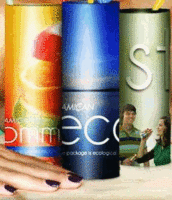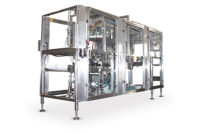How do you ensure dairy industry filling systems are ready for the future? Bergen am Chiemsee, Germany-based Maier Packaging, which is a full subsidiary of the Optima Packaging Group GmbH, Schwäbisch Hall, Germany, has been answering this question since 1985. In a project at dairy company Genuss-Molkerei Zott, Mertingen, Germany, Maier Packaging proved its expertise in retrofitting pre-existing forming, filling and closing systems.
The challenge
Zott, one of Europe's largest dairies, sells its products in more than 75 countries. The family company's most well-known products include Monte, Sahnejoghurt, Jogobella, Primo and Zottarella. Because of the lengthy shipping distances involved, packaging for the internationally sold dessert product Monte is subject to particularly stringent regulations. Therefore, it was necessary for any new filling machine to implement the required standards.
After employing a number of optimization measures that provided improvements, at least in the short term, Zott decided to carry out a general overhaul to significantly boost performance.
Monte, like many of Zott’s other products, is filled in an aseptic forming, filling and closing system that has been used for many years. The single- or double-layer Monte dessert is produced in six-piece containers weighing 55 grams each and four-piece containers weighing 100 grams each. Maier Packaging converted this filling system.
The system first unwinds a plastic sheet from a roll, which is thoroughly heated by means of contact-heating plates. The cups are then thermoformed from the heated sheets. Each cycle simultaneously forms 60 cups. Afterward, they are filled, closed and punched out.
The project was particularly challenging because the machine conversion needed to be carried out on site at Zott and cause the shortest possible interruptions of production operations. After all, these systems are some of the most heavily used at Zott.
"What we needed was an agile, flexible partner with its own in-house production systems who could react quickly to design adjustments," says Martin Lechner, project and process engineer for Production Weiß, which managed the conversion project on behalf of Zott.
This is why Zott sought out Maier Packaging, a company that specializes in exactly these type of retrofit projects.
Four steps to success
To increase the quality of the products and cups, Zott needed to upgrade both systems to the latest state-of-the-art technology. The focal points included converting the drives from hydraulic to safer servo technology, overhauling the heating plate configuration to optimize cup sheet heating prior to the thermoforming process, and optimizing the forming air, pre-stretcher, forming station, draw frame and station control. Another important aspect was, of course, to increase output and energy efficiency.
Zott and Maier Packaging carried out the extensive conversion project in four steps and implemented it in only nine months. These phases each lasted around two to three weeks, including production support.
"First we replaced the switch cabinets and integrated servo drives," explains Alexander Breier, who managed the project at Maier Packaging. "The fact that we had no drawings at all and had to first design the systems was particularly challenging.”
The conversion had to be carried out on-site and within a very short time frame. In the second step, Maier's experts renewed the heating plates, changed their positioning and installed servo drives. The forming station and the pre-stretcher also were retrofitted with a servo drive.
In addition, Maier’s experts installed an optimized forming air inlet valve. In the third conversion phase, additional servo drives replaced the three-phase drives of the filling pumps, including the lever and cam mechanism. In the fourth step, the sealing station, die cutter, station rejection and draw frame were rebuilt.
Product and cup quality enhanced
The conversion measures had an immediate effect.
"Because the heating plates remain in contact with the plastic sheet for a longer period of time, they are more thoroughly heated; thus, the cup quality has improved considerably," says Lechner. Efficiency has been considerably increased, and the number of defective parts has been significantly reduced. Thanks to the servo drives, the processes can now be better coordinated. The dispensing process also has been optimized and now runs faster. Since there are now fewer mechanical parts, the system is more maintenance-friendly overall.
A positive side effect of servo motors is that the system now operates much more quietly. The conversion also makes sense in terms of sustainability. Lechner estimates that energy consumption has fallen by around 200,000 kilowatt-hours per year. Zott also has reduced spare parts and storage costs, because Maier Packaging designed the same parts for similar applications and movement sequences within the machine.
Transparent and responsive partner
In addition, the system's output also experienced a 10% performance increase, Lechner reports. However, with these types of projects, one cannot expect everything to run smoothly at all times. "Thanks to their extensive expertise, Maier Packaging always provided us with shrewd advice, pointed out constructive changes and let us know what effects they may have. We greatly appreciate this transparent, cooperative and honest approach," Lechner says.
He adds that Maier Packaging was very responsive since the company has its own in-house design and production systems.
"Together we have found the right solution for every challenge, even though we sometimes had heated discussions beforehand,” Lechner jokes.




